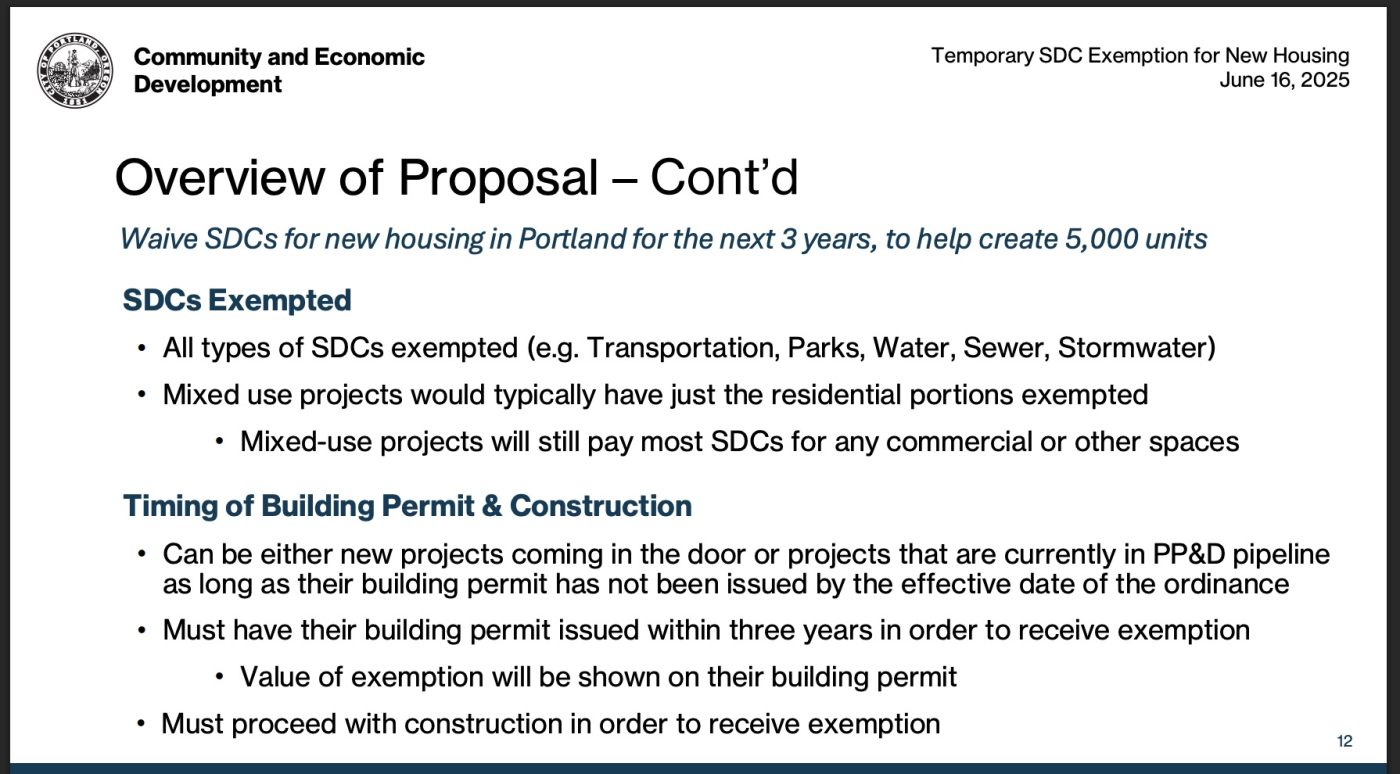Final week Portland Metropolis Council voted unanimously to provide builders a three-year reprieve from paying system improvement prices (SDCs) on residential housing tasks. SDCs are charges paid to metropolis bureaus to assist pay for infrastructure that helps new developments.
Whereas councilors agreed the charge waiver would assist increase badly wanted building of extra residential models (Portland produced simply 818 market charge models in 2024, the bottom whole in 10 years), it’s price noting that the transfer represents yet one more lack of funding for the Portland Bureau of Transportation (PBOT). The three-year SDC moratorium is estimated to value the Metropolis of Portland about $63 million whole.
In response to a presentation from the Workplace of Neighborhood and Financial Growth shared with Metropolis Council, the transfer will value PBOT $10 million. This comes on prime of a narrowly averted price range disaster, continued uncertainty with federal funding that has put $197 million in venture grants in limbo, and an $11 million hole from the state because of the failure of HB 2025.
Whereas 10 councilors (two had been absent) voted to assist the charge waiver ordinance with hopes it will increase manufacturing of two,500 further housing models (on prime of estimated 2,500 for a complete of 5,000), some expressed reservations.
“I’m fearful about how a lot infrastructure funding the place we are able to afford to lose,” mentioned Councilor Candace Avalos, who represents east Portland.
Council President Elana Pirtle Guiney mentioned, “I don’t take evenly the truth that we’re foregoing tens of tens of millions of {dollars} of income for public infrastructure at a time when we’ve got so many infrastructure wants. However I additionally know that proper now, with the instruments in our toolbox, that is the one most impactful factor that we are able to do that yr to assist housing improvement.”
The loudest and most eloquent supporter of the SDC waiver is District 4 Councilor Mitch Inexperienced. He informed members of the PBOT’s Pedestrian Advisory Committee final week that he merely doesn’t like SDCs.
“As a result of nonetheless well-intentioned they’re,” Inexperienced defined, “They solely work when there’s improvement occurring and they’re a marginal value of improvement.” Inexperienced feels it’s already comparatively costly to develop land in Portland because of our labor and land-use legal guidelines, so something that will increase the price of manufacturing simply results in much less housing being constructed. “And should you get much less of it, you don’t get as a lot of a useful resource to your infrastructure improvement, which implies that newest improvement, or that final a part of town to return into the boundaries of town simply doesn’t get it, after which it’s a must to compete for a small pool of cash relative to the dimensions of the issue.”



Inexperienced sees infrastructure as a “collective downside” and a “public good that spans the entire metropolis,” whereas SDCs solely accrue in elements of town fortunate sufficient to see improvement. “The unintended consequence of it’s you’ve gotten a scenario the place neighborhoods have been introduced into town and simply haven’t seen any infrastructure improvement on any significant time scale… when you have a household that strikes to Hayhurst (in southwest), as an illustration, their youngsters are going to develop up and transfer away earlier than they’re going to get a sidewalk to high school. And that’s as a result of we don’t find the money for within the financial institution for SDCs.”
Key to Inexperienced’s outlook on SDCs is that extra housing models equals extra taxpayers who can in the end pay right into a future PBOT funding pot. Inexperienced would fairly see a extra steady funding supply for PBOT and he talked about a number of instances town’s present effort to search out one.
The ordinance that handed yesterday has set a objective of 5,000 housing models within the subsequent three years. Anticipate Metropolis Council to watch progress towards that objective and focus on the way forward for SDCs when — or if — it’s reached.
































